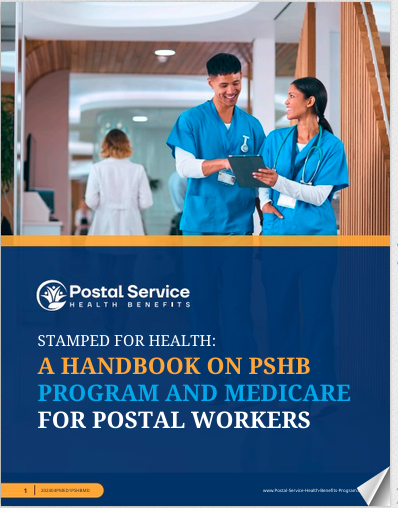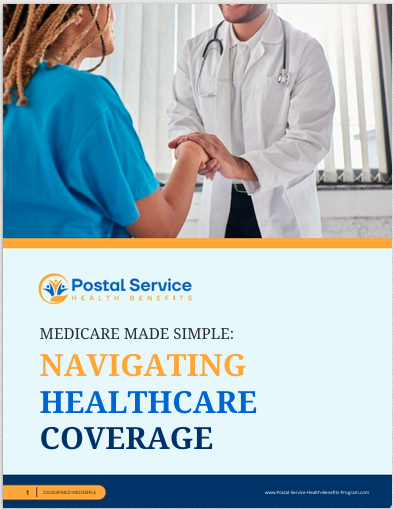Key Takeaways
-
In 2025, your PSHB plan works hand-in-hand with Medicare, especially if you’re retired and eligible for Medicare Part B.
-
Expect changes in prescription drug coverage, cost-sharing rules, and enrollment requirements that could impact how much you pay out of pocket.
Welcome to the New Healthcare Landscape
If you’re a USPS employee or retiree, 2025 brings some of the most significant changes you’ve seen in years. With the Postal Service Health Benefits (PSHB) program officially replacing FEHB, and Medicare rules evolving at the same time, it’s more important than ever to understand how these two systems connect. Whether you’re planning to retire soon or already enjoying retirement, these updates affect your wallet, your options, and your peace of mind.
Let’s break it all down, so you can feel more confident navigating your healthcare decisions this year.
The Big Shift: From FEHB to PSHB
Starting in January 2025, the PSHB program is the new go-to for USPS employees and retirees. It mirrors many parts of the old FEHB program, but there are some big differences that matter to you:
-
Automatic transition: If you were enrolled in FEHB, you were automatically moved to a corresponding PSHB plan unless you made changes during Open Season.
-
Medicare coordination: Medicare-eligible retirees must now be enrolled in Part B to maintain PSHB coverage, with some exceptions.
-
More Medicare-integrated benefits: Many PSHB plans are designed to work better with Medicare, offering lower deductibles and cost-sharing when both are in place.
What’s New with Medicare in 2025?
Medicare is also seeing major updates this year. Here’s what’s changing that could affect your PSHB coverage or your out-of-pocket expenses:
1. A Cap on Prescription Drug Costs
One of the biggest wins for Medicare enrollees in 2025 is the introduction of a $2,000 annual cap on out-of-pocket costs for prescription drugs under Medicare Part D. This change directly affects you if your PSHB plan offers Medicare drug coverage through an Employer Group Waiver Plan (EGWP), which many do.
With this cap:
-
Once you’ve paid $2,000 out-of-pocket for the year, your plan covers 100% of drug costs for the rest of the year.
-
No more coverage gap (a.k.a. the donut hole).
2. Spread Payments Over Time
Medicare now offers a new Prescription Payment Plan that lets you spread your out-of-pocket drug expenses across the calendar year. If you’re on a tight budget, this could make your monthly finances more manageable.
You don’t have to use it, but it’s there if you need it—and if your PSHB plan includes an EGWP, it may already coordinate with this feature.
3. Higher Medicare Premiums and Deductibles
In 2025, the standard Medicare Part B premium is $185, and the annual deductible is $257. For Part A, if you don’t qualify for premium-free coverage, expect to pay up to $518 monthly. The Part A hospital deductible is now $1,676 per benefit period.
These increases matter because they influence how your PSHB plan coordinates with Medicare. The better the coordination, the more potential you have to save—especially if your PSHB plan waives cost-sharing when Medicare is your primary payer.
How Medicare Eligibility Affects Your PSHB Choices
If you’re a USPS retiree and you (or your covered family member) are 65 or older, you’re generally expected to enroll in Medicare Part B to maintain full PSHB coverage. This isn’t optional for most people anymore.
Who Must Enroll in Medicare Part B?
-
All Medicare-eligible annuitants and family members need to be enrolled in Part B unless they retired before January 1, 2025 and are not currently enrolled.
-
If you turn 65 in 2025, you’ll need to enroll in Part B during your Initial Enrollment Period.
Failing to enroll can result in losing certain PSHB benefits or facing late enrollment penalties from Medicare. Ouch.
Why Coordination Is a Big Deal
When your PSHB plan and Medicare Part B work together, you could see significant savings. Here’s how the coordination typically works:
-
Medicare pays first for eligible services.
-
Your PSHB plan picks up the rest, often covering the deductible and coinsurance that Medicare doesn’t.
This means fewer bills, fewer surprises, and fewer reasons to worry about that ER visit or outpatient procedure.
What Does This Mean Financially?
Coordinated plans may reduce your:
-
Deductibles (sometimes to zero)
-
Copayments for specialist visits or hospital stays
-
Out-of-pocket maxes, especially when paired with the $2,000 drug cap
But remember, this all depends on your specific PSHB plan. Not all plans coordinate benefits the same way, so reading the plan brochure or talking to a licensed agent really helps.
Enrollment Periods You Can’t Miss
Timing is everything. If you’re nearing Medicare eligibility or want to switch PSHB plans, keep these windows in mind:
-
Initial Enrollment Period (IEP): Starts 3 months before you turn 65, includes your birthday month, and ends 3 months after.
-
General Enrollment Period (GEP): January 1 to March 31 if you missed your IEP.
-
Open Season for PSHB: Usually runs from November to December, when you can change your PSHB plan.
Missing these windows could lead to penalties or lapses in coverage.
Retired vs. Still Working? It Matters
Whether you’re retired or still working makes a difference in how Medicare and PSHB work for you.
-
If you’re still employed by USPS and have PSHB coverage, Medicare is typically secondary to your PSHB plan.
-
If you’re retired, Medicare becomes your primary coverage, and your PSHB plan works as secondary.
This shift changes how claims are paid, what you owe, and which benefits apply first.
What If You’re Covering a Family Member?
Got a spouse or dependent covered under your PSHB plan? Their Medicare status matters too. If they’re eligible for Medicare, the same Part B enrollment rules likely apply. Make sure everyone on your plan understands what’s required to stay covered and avoid penalties.
New Out-of-Pocket Limits Under PSHB
In 2025, PSHB plans set new in-network out-of-pocket maximums:
-
$7,500 for Self Only
-
$15,000 for Self Plus One and Self & Family
Once you hit these limits, the plan pays 100% for covered in-network services for the rest of the year.
For retirees with Medicare, those limits may effectively be lower if your PSHB plan coordinates well. For instance, Medicare pays its share first, which means you might never reach your PSHB limit.
Don’t Forget About Prescription Drug Coverage
If you’re retired and enrolled in Medicare, your PSHB plan likely includes Part D drug coverage through an EGWP. That means:
-
Automatic enrollment in drug coverage
-
Lower costs after hitting the $2,000 cap
-
Possible access to extra help programs
Always check whether your plan auto-enrolls you and how your drug costs are handled. And if you’re still working, your PSHB plan will usually cover prescriptions directly—no Medicare Part D needed yet.
Get Ready for the PSHB + Medicare Combo
All these changes can feel overwhelming, but they’re also an opportunity. With the right combo of Medicare and a PSHB plan that’s designed to work with it, you could pay less, get more coverage, and stress less about healthcare.
Here’s what you should do next:
-
Check your Medicare status: Are you eligible? Enrolled? Do you need to take action?
-
Review your PSHB plan brochure: Look for sections on Medicare coordination, drug coverage, and cost-sharing.
-
Talk to a licensed agent: They can help you compare plans, understand your options, and avoid costly mistakes.
Take Charge of Your 2025 Healthcare Strategy
2025 is a turning point for USPS healthcare coverage. Whether you’re preparing for retirement, already retired, or still on the job, your choices now set the tone for your healthcare experience this year—and beyond. Understanding how Medicare changes interact with your PSHB plan puts you in control of your costs and care.
Need help sorting through the details? Reach out to a licensed agent listed on this website to get personalized guidance that fits your situation.







